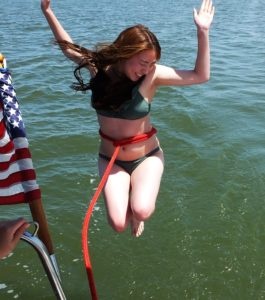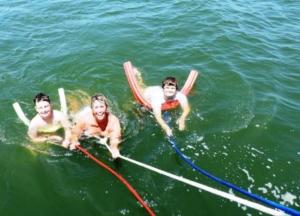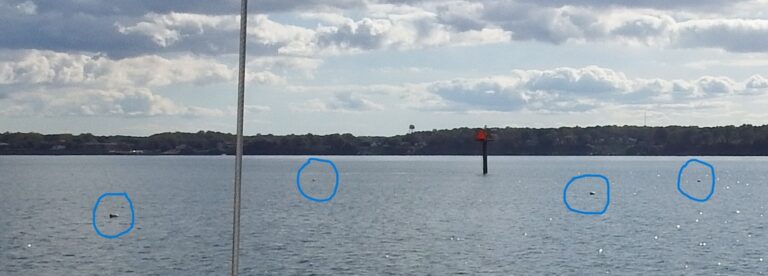
Last Sail
It was a cold and dreary afternoon in late November when I took Stephen Warrick out for the fourth time, with his pal Lisa Fronkenberger. They took ASA 101 together with two other people whom they will join for a combined 103/104 that will take them three days and two

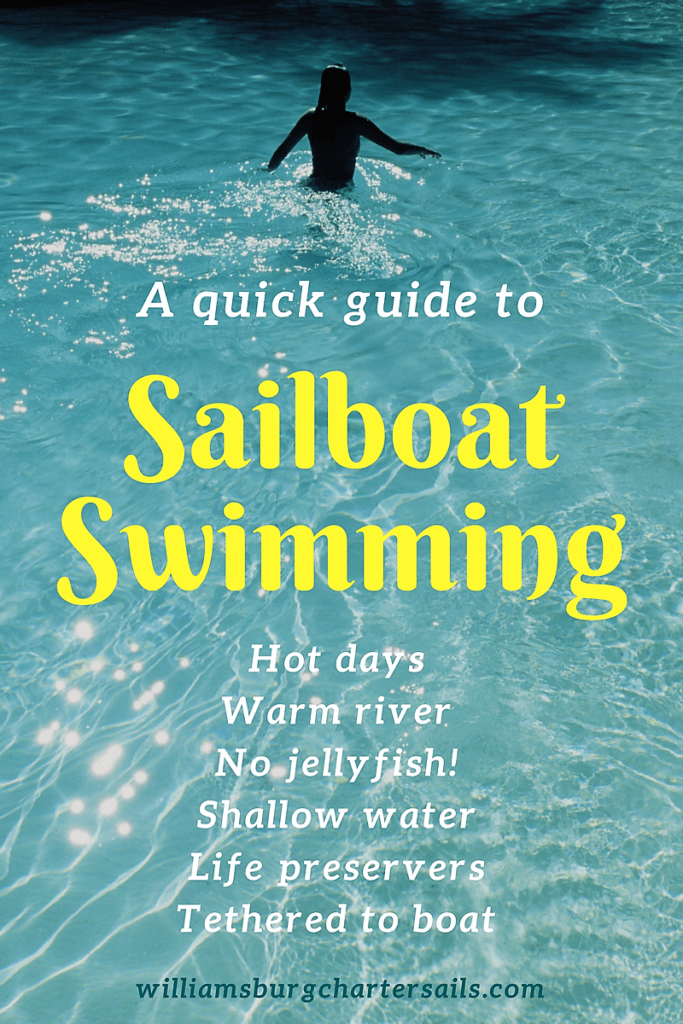
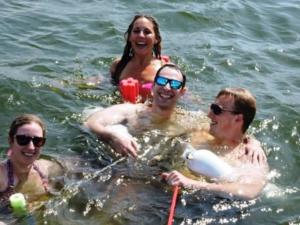 The river temperature in July and August reaches 85-90, which is very comfortable without seeming too hot. The water is safe for swimming except for those rare periods when the Red Tide rolls in. A nitrogen deficiency in the water creates the illusion of red, unpleasantly so. Fortunately the event is rare and is more often found in the Susquehanna River in the northern end of the Chesapeake Bay. Sailboat swimming is safe because the York is free of harmful bacteria, as attested by the popularity of swimming at Yorktown Beach and nearby Gloucester Point Beach. We call Yorktown Beach the poor man’s Virginia Beach, and we call Gloucester Beach the poor man’s Yorktown Beach. The one exception is
The river temperature in July and August reaches 85-90, which is very comfortable without seeming too hot. The water is safe for swimming except for those rare periods when the Red Tide rolls in. A nitrogen deficiency in the water creates the illusion of red, unpleasantly so. Fortunately the event is rare and is more often found in the Susquehanna River in the northern end of the Chesapeake Bay. Sailboat swimming is safe because the York is free of harmful bacteria, as attested by the popularity of swimming at Yorktown Beach and nearby Gloucester Point Beach. We call Yorktown Beach the poor man’s Virginia Beach, and we call Gloucester Beach the poor man’s Yorktown Beach. The one exception is 
